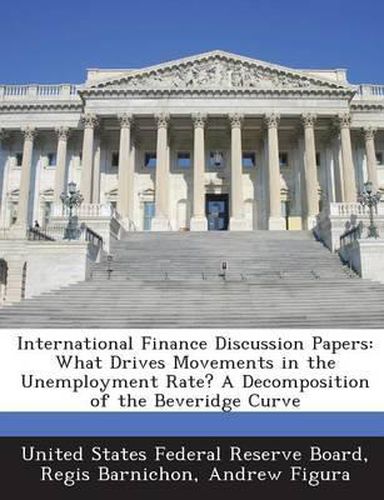Readings Newsletter
Become a Readings Member to make your shopping experience even easier.
Sign in or sign up for free!
You’re not far away from qualifying for FREE standard shipping within Australia
You’ve qualified for FREE standard shipping within Australia
The cart is loading…






This paper presents a framework to interpret movements in the Beveridge curve and analyze unemployment fluctuations. We decompose the unemployment rate into three main components: (1) a component driven by changes in labor demand–movements along the Beveridge curve and shifts in the Beveridge curve due to layoffs–(2) a component driven by changes in labor supply–shifts in the Beveridge curve due to quits, movements in-and-out of the labor force and demographics–and (3) a component driven by changes in the efficiency of matching unemployed workers to jobs. We find that cyclical movements in unemployment are dominated by changes in labor demand, but that changes in labor supply due to movements in-and-out of the labor force also play an important role. Further, cyclical changes in labor demand lead cyclical changes in labor supply. Changes in matching efficiency generally play a small role but can decline substantially in recessions. At low-frequencies, labor demand displays no trend, and changes in labor supply explain virtually all of the secular trend in unemployment since 1976.
$9.00 standard shipping within Australia
FREE standard shipping within Australia for orders over $100.00
Express & International shipping calculated at checkout
This paper presents a framework to interpret movements in the Beveridge curve and analyze unemployment fluctuations. We decompose the unemployment rate into three main components: (1) a component driven by changes in labor demand–movements along the Beveridge curve and shifts in the Beveridge curve due to layoffs–(2) a component driven by changes in labor supply–shifts in the Beveridge curve due to quits, movements in-and-out of the labor force and demographics–and (3) a component driven by changes in the efficiency of matching unemployed workers to jobs. We find that cyclical movements in unemployment are dominated by changes in labor demand, but that changes in labor supply due to movements in-and-out of the labor force also play an important role. Further, cyclical changes in labor demand lead cyclical changes in labor supply. Changes in matching efficiency generally play a small role but can decline substantially in recessions. At low-frequencies, labor demand displays no trend, and changes in labor supply explain virtually all of the secular trend in unemployment since 1976.